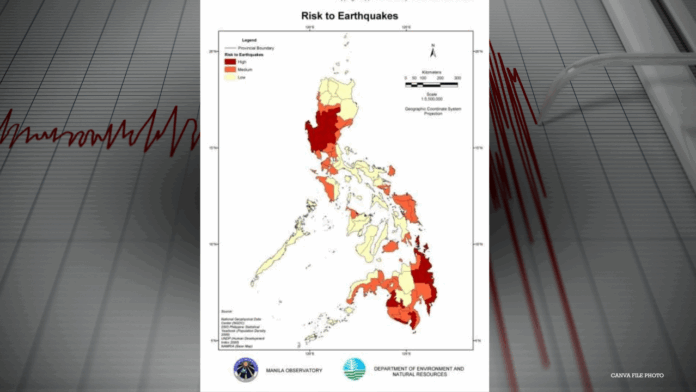Several major fault lines in the Philippines are what experts describe as “ripe” for major earthquakes, as these hotspots can cause devastating tremors at any given time.
One of these is the West Valley Fault, which cuts across densely populated areas of Metro Manila and surrounding provinces, and is the most prominent fault in the country. Geological studies and historical data show that the West Valley Fault could potentially generate “The Big One,” or the predicted 7.2 magnitude major earthquake that is expected to strike the nation’s capital and nearby areas.
Scientists from the Philippine Institute of Volcanology and Seismology (PHIVOLCS) have long warned of the Fault being the epicenter of “The Big One,” since studies point to a recurrence interval of 200 to 400 years for major movement. The last significant earthquake in this area occurred 365 years ago, which means that another major calamity could occur.
The Central Leyte Fault is another epicenter that PHIVOLCS sees as the harbinger of the 7.2 magnitude quake with an intensity of 8 in the area. As part of the Philippine Fault Zone (PFZ), it runs through the provinces of Leyte and Masbate, certain parts of Luzon, as well as the Marikina Valley Fault System in Metro Manila.
The Department of Science and Technology (DOST) said that the PFZ has been a source of historically powerful earthquakes, including the magnitude 7.7 Luzon quake in 1990, and the magnitude 7 that rocked Ragay Gulf in 1973.
The Surigao Fault Line, which spans the provinces of Surigao del Norte and Surigao del Sur, is also considered an active fault line. Like the Leyte Central Fault, it is part of the PFZ, while its frequent seismic activity makes the region highly susceptible to earthquakes.
The Central Negros Fault on Negros Island is likewise a ripe location for a future earthquake. PHIVOLCS considers this as an active fault, with the region identified as an earthquake hazard.
While we cannot prevent natural disasters, we can minimize their effects through awareness, preparation, education, and information campaigns. Close coordination with Local Government Units and government agencies will greatly reduce casualties, damage to agriculture and property, and economic impact.



